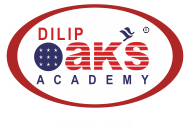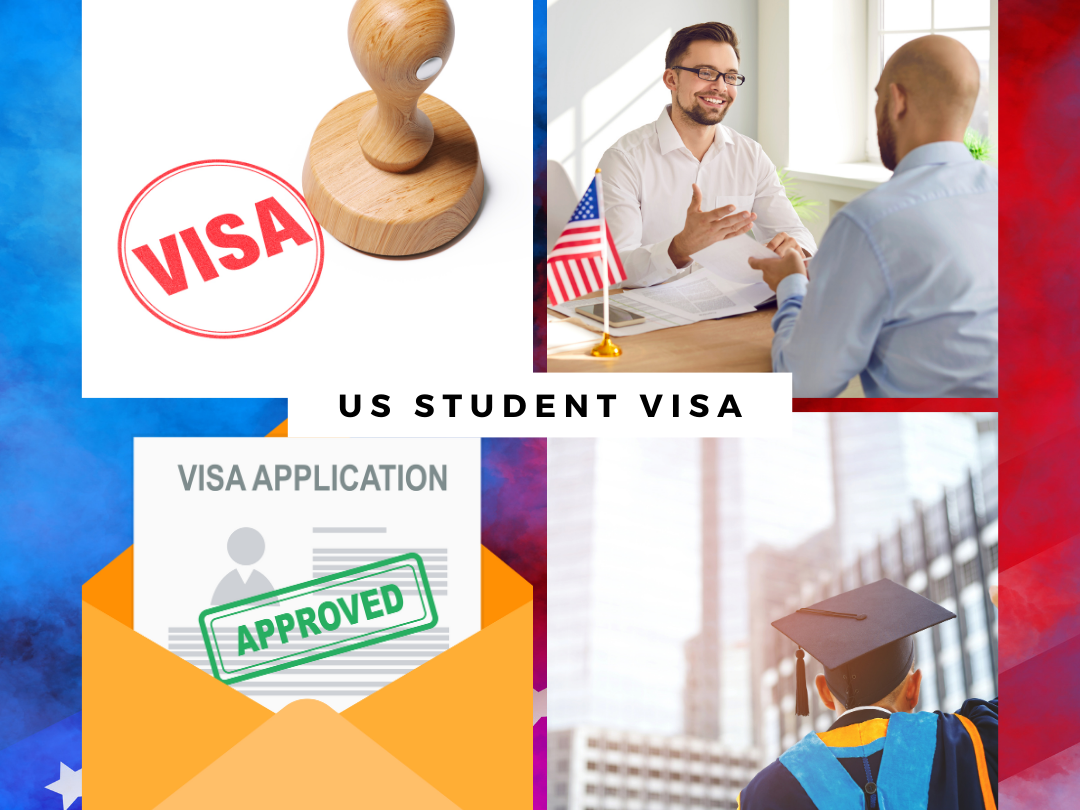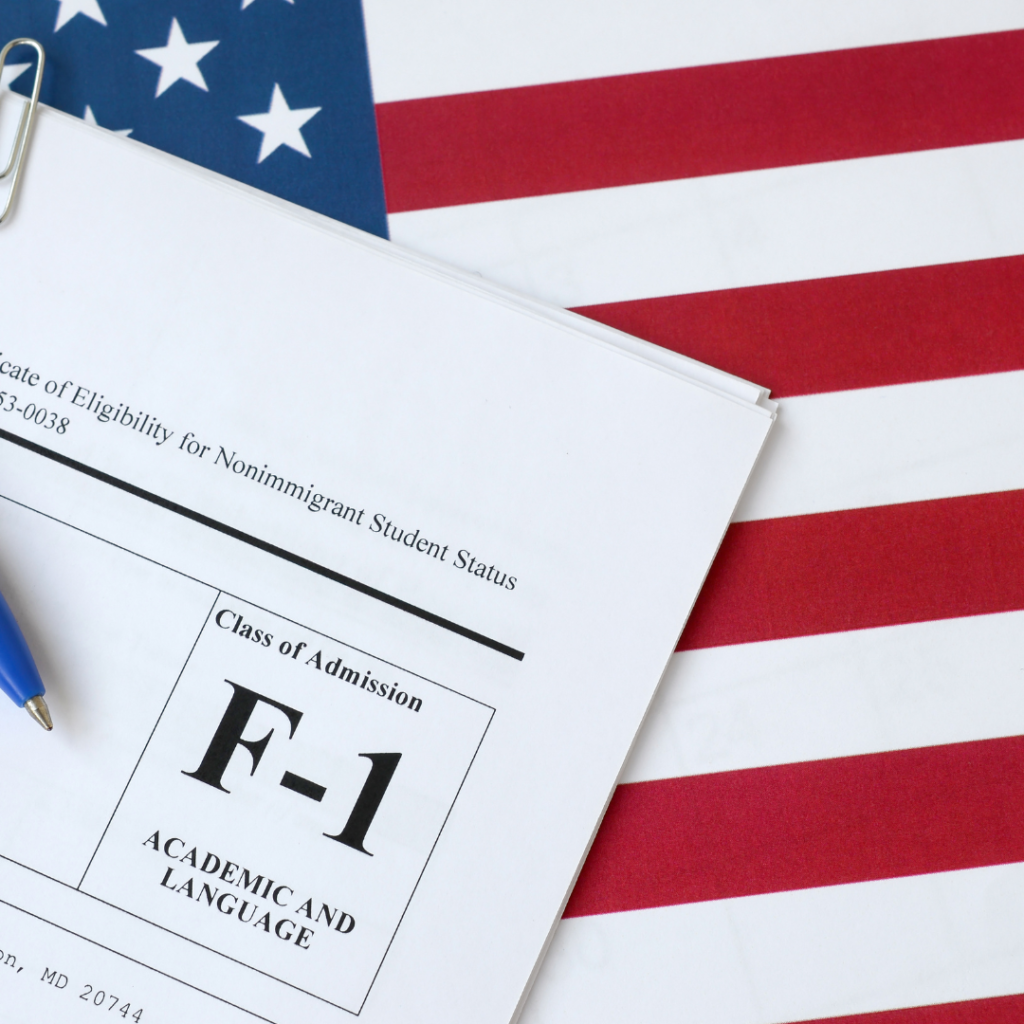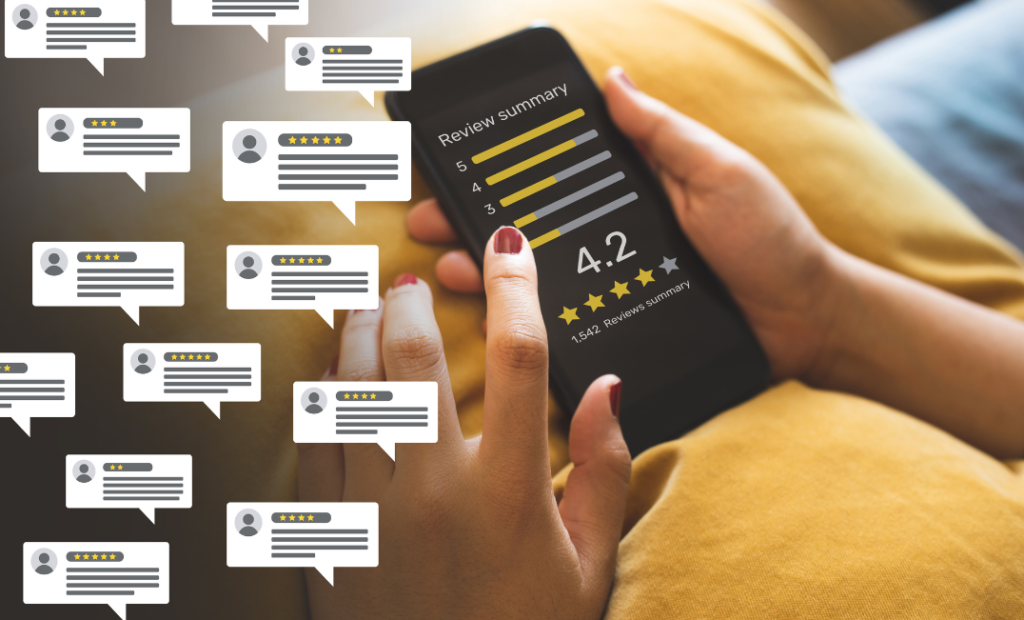There are two categories of student visas: F1 and M1. The M1 visa is given for non-academic or vocational education for a duration of less than a year, and it includes fields such as gemology, aviation etc. F1 visa is given for a full-time program leading to a degree such as a bachelor’s, master’s, or doctoral degree, which lasts at least one year. In this blog, we will discuss about the F1 visa. Below are a few important and frequently asked questions.
a) Where can you apply for an F1 visa?
Before COVID-19, applicants could only apply for appointments at the consulate closer to their residence. For example, applicants residing in Maharashtra, Gujarat, Goa, Madhya Pradesh, and Chhattisgarh could only apply to the US Consulate – Mumbai.
But now, there is no such restriction. You are allowed to apply to any Consulate where the appointment dates are available. Sometimes, you may get an appointment for OFC at one consulate and a visa interview at another.
The current visa application fee is $185, payable in INR 15540/-.
b) When will appointments for F1 visas begin for Fall 2024 applicants?
Applicants can apply for an F1 visa within 365 days of the course’s start date mentioned on the I-20. In other words, to ensure you get an early and timely date, you may apply for a visa as soon as you receive an I-20 from any university. Every year, the US consulate tries to accommodate all the students intending to apply for an F1 visa. However, since the number of students applying for visas is quite large, it becomes difficult to get an interview date if they apply in July or August. Therefore, it is advisable that students apply for the interview date as soon as they receive the I-20 from any university.
Later, if you receive an I-20 from the desired university, you can fill out a new DS-160 mentioning the name of the new university. You must bring the original DS-160 confirmation page you have used to schedule your appointment AND the corrected DS-160 confirmation page to the consulate or document drop-off location on the day of your appointment. If you are unable to bring your original DS-160 confirmation page and your corrected DS-160 confirmation page, you must cancel and reschedule your appointment by entering your corrected DS-160 application number.
Still figuring out which universities to apply to and their deadlines? Here’s a Complete Guide to Fall 2024 MS Program Application Deadlines
c) What is an I-20 form and how do I obtain it?
The Form I-20 is an official US Government form issued by a certified school, which a prospective non-immigrant student must have to get an F-1 or M-1 visa. Form I-20 acts as proof of acceptance and contains the information necessary to pay the SEVIS I-901 fee, apply for a visa and be admitted into the United States. Form I-20 has the student’s SEVIS identification number, which starts with the letter N followed by 10 digits, on the top left-hand side.
The Student and Exchange Visitor Information Service (SEVIS) has been introduced by the Immigration and Naturalization Service (IMS) for students. Before appearing for an F1 visa interview at the consulate, you need to pay SEVIS charges of US $350.
d) If my visa was rejected the first time, can I reapply for it?
Students are allowed to reapply as many as they want.
e) What is the Dropbox facility (Interview Waiver)?
With effect from 1st January 2024, if you have any other valid US visa except a B1/B2 Visa, then you are eligible for a visa through Dropbox, which is nothing but a visa interview waiver that allows eligible individuals to obtain a visa without a face-to-face interview at the U.S. Embassy or Consulate. Instead, these applicants can submit the required documentation at a designated Dropbox location.
To become eligible for the Dropbox facility,
- The visa has to be issued after 1st January 2008
- The visa should be issued after your 14th birthday.
If your visa has already expired, you can avail of the Dropbox facility, provided your visa expired not more than 4 years ago.
f) How long will it take to receive my passport if I apply for the F1 visa through Dropbox?
You are likely to receive your passport within 7 working days.
g) How to book an F1 Visa appointment?
- Fill up the D-160 form
- Create a profile on www.ustraveldocs.com
- Choose the schedule appointment option and select visa type (Non-immigrant)
- Follow all the instructions given on the website
Ready to take the next step towards your US academic journey? Contact us today to explore our exclusive USA visa counseling services. Our Services consist of the following:
- webinar providing detailed information about the Visa process and guidelines
- help with the preparation of financial documents
- one-on-one appointment with Mr. Dilip Oak for a mock visa interview.
You are also eligible to attend the pre-departure orientation program organized in June.
To enroll, call us at 020-67444222 or email us at support@dilipoakacademy.com.

In this digital age, online coaching classes have become a popular choice for Graduate Record Examination (GRE) preparation. The convenience of studying from the comfort of your home and the flexibility of online learning make it an attractive option for many GRE aspirants. However, with so many online coaching options, selecting the best one can be daunting. In this blog, we’ll explore seven crucial tips to guide you in choosing the best GRE online coaching classes that align with your goals and learning preferences.
1. Research the Reputation:
Start your journey by looking into the reputation of online coaching classes. Conduct thorough research, read reviews, and explore testimonials from students who have undergone the program. Reputable platforms often have a track record of success, and their alumni can provide valuable insights into the effectiveness of the online coaching experience. Also, ask for feedback from your college seniors and consider their experiences in making an informed decision.
2. Online Instruction Expertise
The quality of instruction plays a pivotal role in the effectiveness of an online coaching program. Look for platforms with experienced instructors with a proven track record in online GRE preparation. Online instruction requires a unique skill set, and instructors who can effectively convey complex concepts through digital mediums enhance the overall learning experience.
3. Engaging Learning Environment:
Effective online coaching classes should foster an interactive and engaging learning environment. Features such as live sessions, discussion forums, and interactive quizzes can enhance your understanding of GRE concepts. Assess the platform’s commitment to creating an interactive space that simulates the engagement of a physical classroom.
4. Comprehensive Study Materials:
Evaluate the availability and quality of study materials offered by the online coaching platform. A comprehensive set of materials, including books, online question banks, practice tests, and video lectures, is essential for a well-rounded GRE preparation. Ensure the materials align with the latest GRE format and cover all relevant content areas.
5. Interactive Doubt-solving Sessions:
Choose platforms that prioritize regular doubt-solving sessions. This will allow you to get clarification on challenging topics that can significantly enhance your understanding of GRE concepts. So, look for coaching classes that schedule interactive doubt-solving sessions to cater to individual learning needs.
6. Adaptive Mock Tests:
Practice tests are a crucial component of GRE preparation, and online coaching classes should offer a robust set of good-quality mock tests. Also, ensure the mock tests align with the latest GRE format. Regularly taking simulated GRE tests and analyzing your performance can help identify areas for improvement and refine your test-taking strategies.
7. Free Demo Classes:
Opt for platforms that offer free trials or sample classes. This allows you to experience the teaching style, platform interface, and overall learning environment before committing to the full program. Free trials help you make an informed decision based on firsthand experience.
Selecting the best GRE online coaching classes requires careful consideration and research. By focusing on factors such as the platform’s reputation, instructor expertise in online instruction, interactive learning features, comprehensive study materials, doubt-solving sessions, mock tests, and free demo classes, you can make an informed decision that aligns with your learning style and preferences.
Remember that the right online coaching class can significantly impact your GRE preparation journey. It’s not just about the content but the overall learning experience. Invest time in exploring your options, and choose an online coaching class that not only equips you with the knowledge needed to ace the GRE but also enhances your skills and confidence in navigating the digital realm of education. Your success in the GRE is within reach with the right online coaching platform.
As India’s leading Study Abroad Consultant, Dilip Oak’s Academy offers a comprehensive suite of services, including GRE, TOEFL, and IELTS coaching, as well as GRE Self Prep. Furthermore, our admission counseling services can guide you through the entire process from Shortlisting Universities to Visa Counseling. With our expertise, we have successfully sent 32,000 students to various prestigious American universities like MIT, Stanford, Cornell, and Carnegie Mellon. To enroll in our comprehensive overseas education consultancy services, book a free consultation or call us at 91-20-67444222.

An education loan covers the cost of tuition, living costs, insurance, and other incidentals. Given the wide variety of choices available today, finding the best deal to finance your MS in the US is possible. In fact, taking an education loan is a smart move, as you don’t need to break into your savings while taking advantage of tax benefits.
Eligibility
Students pursuing full-time higher education, graduate or postgraduate studies, and professional education, irrespective of age, can borrow the required funds to finance their MS in the US. Most loan providers require that students show proof of admission to the graduate or postgraduate program. However, some private institutions and cooperative banks sanction a loan even before getting admission.
Tax Benefits of Financing Your Education
People with sufficient funds are also advised to take a loan to finance their education since they get tax deductions under Sec 80E of the Income Tax Act. There is no limit for Section 80E exemption up to which you can claim the deduction. All interest paid in a financial year is tax deductible, regardless of the sum. The interest component of the education loan can be claimed under Section 80E just as deductions under Section 80C and Section 80D are claimed before arriving at your total income to calculate the tax liability. However, it is important to note that you can claim a tax deduction only for the interest portion. You cannot claim a tax deduction for the principal part of the EMI.
You will be eligible to claim a deduction under section 80E only if you take the loan from any bank/financial institution or any approved charitable institution. Loans from friends or relatives for higher education do not qualify for this deduction.
You will also be applying for your visa soon enough. Click here to know more about the F1 Visa Application Process.
Loan Amount and Repayment
I-20 or Admission Letter mentions the total cost of education for one year. Students can get a loan for up to double the amount mentioned on the I-20. Depending on the loan provider, there are slight variations regarding the application process, documentation, interest rates, guarantees, etc. Students are not expected to pay any EMI for the first two years. (Some loan providers may demand interest during these two years.) Generally, loan repayments begin one year after the end of your course or six months after you secure your first job, whichever is earlier. Most lenders also allow for additional time in case the student is unable to finish the course on schedule. Loan repayments are spread over 10-15 years to ensure that you are able to comfortably finance your MS in the US and include options for early repayment.
Rate of Interest and Margin Money
Most Nationalized banks and financial institutions offer fixed or floating interest rates in the range of 9-12%. Girls generally get a 0.5% concession from banks.
There is also the all-important factor of “margin money”! What this means is that most lenders will not loan you the entire cost of education – they also expect you to pay part of it. In other words, if, for example, your education cost is Rs. 40 lakhs in all, and there is a margin of 10%, then the bank will lend you Rs. 36 lakhs, and you will have to put up the remaining Rs. 4 lakhs. The idea is to ensure the loan seeker can bring money in and demonstrate responsibility. However, not all lending institutions insist on margin money; for example, loans from HDFC CREDILA do not need a margin.
Guarantors & Collateral
A guarantor is a third party (different from the applicant) who agrees to repay the loan if the borrower can’t. Besides this undertaking, lenders also request collateral in the form of fixed deposit receipts, property, or other security. They keep this collateral in their possession until you repay the loan. Banks or lenders do this to safeguard themselves against a bad debt. The lender may waive the guarantee if the borrower’s previous repayment track record or financial history is very sound.
If payments are defaulted on, i.e., not made on time, the loan contract has provisions for penalties/late payment fees. Besides, defaulters also risk being ‘redlisted’, which severely limits their future credit options. However, most bankers or institutions are receptive to negotiation and allow for extensions on payment tenure or reduction of EMIs in case of genuine difficulties.
So, look around and see your options! A good loan deal can be a big asset in helping you finance your dream of an American education.
As India’s leading Study Abroad Consultant, Dilip Oak’s Academy offers a comprehensive suite of services, including GRE, TOEFL, and IELTS coaching, as well as GRE Self Prep. Furthermore, our admission counseling services can guide you through the entire process from Shortlisting Universities to Visa Counseling. With our expertise, we have successfully sent 32,000 students to various prestigious American universities like MIT, Stanford, Cornell, and Carnegie Mellon. To enroll in our comprehensive overseas education consultancy services, book a free consultation or call us at 91-20-67444222.
- admission counseling, dilip oak academy, financial aid, financial assistantship, graduate assistantship, graduate school fellowships, internship or job, MS in US, overseas education consultant, research assistantship, scholarships and funding, study abroad, study abroad consultant, tuition waiver, us education consultant
Join us on a heartwarming journey through the magic of Santa’s tale, a narrative woven with the enchantment of the Yuletide season. Through this festive narrative, let’s unwrap a treasure trove of 100+ words of GRE and TOEFL vocabulary embedded within the heartwarming saga of Santa’s illness and the children’s altruism.
***(Anticipate the contextual meaning of this GRE and TOEFL vocabulary list as you read through the blog. Later, click here to revise the words and their meanings.)
A Tale of Santa’s Illness:
A feverish stillness loomed over Santa’s workshop in the frosty realm of Lapland, where snow-laden pines draped the landscape in a hushed serenity. The gregarious laughter and merry hustle that generally pervades the air had waned, replaced by a disquieting calm. Santa Claus, the venerable emblem of Yuletide joy, lay tucked in his bed under the care of Mrs. Claus, his faithful consort.
The Yuletide season, usually abuzz with the euphoric preparations for the grand Christmas Eve journey, was marred by Santa’s ailing health. His vigorous spirits had dimmed, and his cheeks, usually aglow with radiant warmth, now bore a pallid hue. Mrs. Claus, with her undying devotion, tended to him, her heart overwhelmed with apprehension for her beloved husband.
The bustling workshop, once teeming with spirited elves and their myriad of endeavors, now lay dormant in Santa’s absence. The typically blissful reindeer, guardians of the sleigh, trod softly, their luminous eyes reflecting a sorrow that echoed the subdued ambience.
However, the most poignant sentiments emerged from the children, each bearing the quintessence of Christmas elation and fervor. Despite their tender years, their hearts brimmed with compassion and fervid admiration for the bedridden Santa Claus.
Children’s Acts of Kindness and Compassion
Timmy, a precocious lad with an intrinsic penchant for kindness, was the first to initiate a ripple of kindness. With a motley of inspiring drawings, he crafted an endearing gesture, hoping to alleviate Santa’s malaise. The imagery of Santa’s jovial smile, an iconic motif during Christmas, adorned the drawings, emanating an inherent warmth.
Emily, a vivacious girl with an unbounded imagination, weaved tales. Her mellifluous voice painted vivid images of triumphs, adventures, and Santa’s revered heroism. Her stories, symbolizing hope and resilience, sought to invoke the joyous spirit of the festive season.
Meanwhile, the diligent elves, their usual ardor now channeled into an altruistic endeavor, fashioned heartwarming letters adorned with stunning illustrations. Penned in a linguistic tapestry of ingenuousness and cheer, these epistles conveyed heartfelt wishes for Santa’s speedy recovery.
Click here to read many such blogs to improve your vocabulary for GRE and TOEFL.
Community Unity and Generosity
The selfless act extended further as the local community, epitomes of communal unity, orchestrated a picturesque parade. Amidst the vibrant spectacle, carols reverberated through the snow-clad streets, radiating a message of resilience and unity.
The spirit of giving and magnanimity, symbolic of the Yuletide season, swelled within children’s hearts. Each bore gifts, not merely wrapped in plush paper but steeped in sentiments of goodwill and fervent wishes for Santa’s swift recuperation.
As Christmas Eve drew near, a gleeful commotion stirred at Santa’s doorstep. The once-muted workshop was now engulfed in an uproarious cheer. The children, their eyes gleaming with excitement, presented their gifts—a mélange of colorful tokens. From handmade trinkets to rousing notes, each articulated a message of appreciation and adoration for Santa.
The effervescent cheer and camaraderie shared amongst the children formed a resplendent tapestry of hope and compassion. Even Rudolf and his reindeer brethren emitted a palpable sense of jubilation.
Santa’s Joyful Recovery and Christmas Day Triumph
Santa, enveloped by the jubilant aura that encompassed his abode, felt a rekindling of vigor. His eyes, usually twinkling with merriment, now sparkled with a glimmer of gratitude. The brilliant smile that manifestedon his face encapsulated the essence of Christmas optimism—a testament to the innate valor and benevolence present within the children’s hearts.
And so, as the clock chimed the arrival of Christmas Day, the warmth of generosity and the zeal for munificence had vanquished the shadows of Santa’s ailment. The moving gestures of the children, a beacon of hope and jubilation, had triumphed in bringing back the resounding joy that customarily commemorated the festive season.
As India’s leading Study Abroad Consultant, Dilip Oak’s Academy offers a comprehensive suite of services, including GRE, TOEFL, and IELTS coaching, as well as GRE Self Prep. Furthermore, our admission counseling services can guide you through the entire process, from Shortlisting Universities to Visa Counseling. With our expertise, we have successfully sent 32,000 students to various prestigious American universities like MIT, Stanford, Cornell, and Carnegie Mellon. To enroll in our comprehensive overseas education consultancy services, book a free consultation or call us at 91-020-67444222.
100+ GRE Words, Meanings, Sentences:
Below are the meaning and sample sentences of the 100+ GRE words you saw in the story “A Christmas Gift for Santa”. Focus on remembering the words in context of the story for better recollection of the words.
- Abode: (noun) a home or residence. E.g., Santa’s workshop in Lapland served as his abode where Christmas magic was crafted.
- Abuzz: (adjective) filled with excited or lively activity. E.g., The workshop was abuzz with activity as elves prepared for Christmas.
- Adorned: (adjective) decorated or embellished. E.g., The sleigh was adorned with twinkling lights, ready for the festive journey.
- Aglow: (adjective) glowing or radiant. E.g., The children’s faces were aglow with anticipation for Santa’s recovery.
- Ailing: (adjective) experiencing illness or poor health. E.g., Santa’s ailing health cast a shadow over the usually joyous season.
- Alleviate: (verb) to make suffering or a problem less severe. E.g., The heartfelt gestures of the children aimed to alleviate Santa’s malaise.
- Altruistic: (adjective) showing selfless concern for others. E.g., The elves’ altruistic efforts were directed toward cheering up Santa.
- Apprehension: (noun) anxiety or fear about future events. E.g., Mrs. Claus felt a sense of apprehension about Santa’s health.
- Ardor: (noun) enthusiasm or passion. E.g., The ardor of the children in helping Santa was heartwarming.
- Articulate: (verb) express clearly and distinctly. E.g., Emily’s tales were articulated vividly, bringing cheer to Santa’s room.
- Beacon: (noun) a guiding light or signal. E.g., The children’s acts of kindness were a beacon of hope for Santa’s recovery.
- Beloved: (adjective) dearly loved or cherished. E.g., Mrs. Claus was Santa’s beloved companion, staying by his side throughout his illness.
- Benevolence: (noun) an inclination to do good or show kindness. E.g., The children’s benevolence toward Santa exemplified the spirit of Christmas.
- Blissful: (adjective) extremely happy or joyful. E.g., The workshop was usually a blissful place, bustling with festive cheer.
- Brethren: (noun) brothers or members of a particular group. E.g., Rudolf and his reindeer brethren shared Santa’s concern for his health.
- Brim: (verb) fill to the brim or to the point of overflowing. E.g., The children’s hearts brimmed with affection for Santa.
- Bustling: (adjective) full of energetic and noisy activity. E.g., The once bustling workshop now lay dormant in Santa’s absence.
- Camaraderie: (noun) mutual trust and friendship among people who spend time together. E.g., The elves’ camaraderie was evident in their collective effort to uplift Santa’s spirits.
- Chime: (verb) to make a ringing sound, especially from a bell. E.g., The clock chimed, signaling the arrival of Christmas Eve.
- Commemorate: (verb) remember or celebrate in honor of an event. E.g., The children’s gifts were a way to commemorate Santa’s dedication.
- Communal: (adjective) shared or used by members of a community. E.g., The communal effort brought joy to Santa’s workshop.
- Consort: (noun) a partner or companion. E.g., Mrs. Claus was Santa’s devoted consort, caring for him during his illness.
- Diligent: (adjective) hardworking and conscientious. E.g., The diligent elves diverted their efforts to cheering up Santa.
- Disquieting: (adjective) causing unease or worry. E.g., The disquieting calm in the workshop reflected Santa’s absence.
- Drape: (verb) cover or adorn with cloth. E.g., The trees were draped in snow, adding to the wintry scenery of Lapland.
- Effervescent: (adjective) bubbly, vivacious, or enthusiastic. E.g., Despite Santa’s illness, the children’s effervescent spirits brought cheer to the workshop.
- Elation: (noun) a feeling of great happiness or joy. E.g., Timmy’s elation was evident when he saw Santa smile at his drawings.
- Elf: (noun) mythical creatures, often portrayed as small, mischievous, and skilled at crafting. E.g., The elves, Santa’s loyal assistants, paused their work to wish him a speedy recovery.
- Emanate: (verb) issue or spread out from a source. E.g., Emily’s stories had a warmth emanating from their every word, soothing Santa’s illness.
- Emit: (verb) to give off or send out. E.g., The Christmas lights emitted a soft, radiant glow throughout the workshop.
- Encapsulate: (verb) to express the essential features of something in a brief form. E.g., The handmade cards encapsulated the children’s heartfelt wishes for Santa’s recovery.
- Encompass: (verb) included or contained. E.g., The festive spirit encompassed the entire village, uniting everyone for Santa’s well-being.
- Endearing: (adjective) inspiring affection or warmth. E.g., Timmy’s endearing gesture touched Santa’s heart, bringing a smile to his face.
- Endeavor: (noun) concerted efforts or attempts towards a goal. E.g., Despite their young age, the children’s endeavors to cheer up Santa were commendable.
- Engulf: (verb) completely surround or cover. E.g., The town was engulfed in holiday decorations, reflecting the Christmas spirit.
- Epistle: (noun) letters or communications, often formal or written. E.g., The heartfelt epistles from the community poured in, wishing Santa a speedy recovery.
- Epitome: (noun) perfect examples or representations of something. E.g., The children’s acts of kindness were epitomes of the Christmas spirit.
- Euphoric: (adjective) intensely happy or joyful. E.g., The children’s faces were euphoric as they presented their gifts to Santa.
- Fashion: (verb) make or shape. E.g., The elves fashioned heartwarming gifts for Santa, pouring their care into each one.
- Fervent: (adjective) passionate or intense in feeling or belief. E.g., Emily had a fervent desire to see Santa back in good health.
- Fervid: (adjective) intensely enthusiastic or passionate. E.g., The fervid hope of the community for Santa’s recovery was evident in their actions.
- Fervor: (noun) intense and passionate feeling. E.g., The children’s fervor for Santa’s well-being was evident in their gifts.
- Feverish: (adjective) having or showing the symptoms of a fever. E.g., Mrs. Claus was feverish with worry about Santa’s health.
- Gleaming: (adjective) shining brightly. E.g., The gleaming ornaments adorned the workshop, despite the subdued atmosphere.
- Gleeful: (adjective) full of joy or happiness. E.g., The children were gleeful when they saw Santa’s smile return.
- Glimmer: (noun) a faint or wavering light. E.g., A glimmer of hope returned to the workshop with each child’s gift.
- Gregarious: (adjective) sociable or fond of company. E.g., Santa was gregarious by nature, but his illness had made him withdrawn.
- Hue: (noun) a color or shade. E.g., Santa’s usually rosy hue had faded due to his illness.
- Hustle: (noun) busy, noisy activity. E.g., The usual hustle and bustle of the workshop were missing during Santa’s illness.
- Iconic: (adjective) widely recognized and respected. E.g., Santa’s iconic image brought joy to millions worldwide.
- Ingenuousness: (noun) innocence or naivety. E.g., The children’s ingenuousness made their gestures for Santa even more heartwarming.
- Inherent: (adjective) existing as a natural part of something. E.g., The inherent kindness in the children’s hearts was evident in their gifts.
- Innate: (adjective) existing from birth; inborn. E.g., Emily had an innate talent for storytelling, captivating everyone with her tales.
- Intrinsic: (adjective) belonging naturally; essential. E.g., The intrinsic joy of Christmas was restored in the workshop.
- Jovial: (adjective) cheerful and friendly. E.g., Santa’s usually jovial demeanor had been subdued by his illness.
- Jubilant: (adjective) extremely joyful or happy. E.g., The jubilant children’s laughter filled the workshop.
- Linguistic Tapestry: (phrase) a diverse or intricate arrangement of language or words. E.g., The elves’ letters were a linguistic tapestry, weaving heartfelt messages for Santa.
- Loom: (verb) appear indistinctly or as a shadowy form. E.g., A sense of worry loomed over the workshop during Santa’s illness.
- Magnanimity: (noun) generosity and nobility of spirit. E.g., The children’s magnanimity shone through their thoughtful gifts for Santa.
- Malaise: (noun) a general feeling of discomfort or illness. E.g., Santa’s malaise kept him confined to his bed.
- Mar: (verb) impair the appearance or quality of. E.g., Santa’s illness marred the usually joyous Yuletide season.
- Mélange: (noun) a mixture or assortment of various things. E.g., The children brought a mélange of gifts for Santa, each one unique.
- Mellifluous: (adjective) pleasant-sounding or musical. E.g., Emily’s mellifluous voice made her stories enchanting.
- Merriment: (noun) cheerful or festive fun. E.g., The workshop was usually filled with merriment during the Christmas season.
- Motif: (noun) a distinctive feature or dominant idea. E.g., Santa’s iconic red suit became a motif in the children’s drawings.
- Motley: (adjective) varied or diverse in appearance. E.g., The children’s gifts were a motley collection of love and hope.
- Moving: (adjective) causing deep emotions, especially sadness or sympathy. E.g., The children’s gestures were incredibly moving, touching Santa’s heart.
- Munificence: (noun) great generosity or lavishness. E.g., The town’s displays of munificence uplifted Santa’s spirits.
- Muted: (adjective) softened or subdued. E.g., The usually vibrant workshop was now muted due to Santa’s illness.
- Myriad: (noun) a countless or extremely great number. E.g., The children brought a myriad of gifts for Santa’s recovery.
- Orchestrate: (verb) arrange or organize something carefully and effectively. E.g., The community orchestrated a heartwarming parade to uplift Santa’s spirits.
- Overwhelm: (verb) to overpower or be overcome by a strong emotion. E.g., Mrs. Claus was overwhelmed with concern for Santa’s health.
- Pallid: (adjective) pale, typically because of poor health. E.g., Santa’s usually rosy cheeks had become pallid due to his illness.
- Palpable: (adjective) able to be touched or felt. E.g., The children’s joy was palpable when Santa smiled at their gifts.
- Penchant: (noun) a strong liking or inclination for something. E.g., Timmy had a penchant for spreading kindness and cheer.
- Pen: (verb) write or compose. E.g., The children penned heartfelt messages for Santa’s speedy recovery.
- Pervade: (verb) spread through and perceived in every part of something. E.g., The spirit of Christmas pervades the town, uniting everyone for Santa’s sake.
- Picturesque: (adjective) visually attractive, especially in a quaint or charming way. E.g., The picturesque parade lifted the spirits of everyone in the community.
- Plush: (adjective) luxurious or comfortable, especially in a soft and rich way. E.g., The children brought gifts wrapped in plush paper for Santa.
- Poignant: (adjective) evoking a keen sense of sadness or regret. E.g., Santa’s illness was a poignant reminder of the fragility of life.
- Precocious: (adjective) unusually advanced or mature in development. E.g., Timmy, a precocious young boy, led the efforts to cheer up Santa.
- Quintessence: (noun) the most perfect or typical example of a quality or class. E.g., The children’s acts of kindness were the quintessence of compassion and goodwill.
- Radiant: (adjective) emitting or reflecting light; shining. E.g., Emily’s radiant smile lit up the workshop as she shared her stories.
- Radiate: (verb) send out rays or waves. E.g., The warmth of the children’s love was radiating throughout Santa’s abode.
- Recuperation: (noun) the process of recovering from an illness or injury. E.g., Santa’s recuperation was swift thanks to the children’s heartfelt gestures.
- Rekindle: (verb) to revive or renew something that has been lost. E.g., The children’s gifts had a way of rekindling the holiday spirit in Santa.
- Resilience: (noun) the capacity to recover quickly from difficulties. E.g., The community showed resilience in their efforts to bring joy back to Santa’s life.
- Resounding: (adjective) echoing or emphatic in sound. E.g., The resounding cheers of the children filled Santa’s heart with warmth.
- Resplendent: (adjective) splendid or dazzling in appearance; magnificent. E.g., The resplendent decorations lifted everyone’s spirits in the workshop.
- Reverberate: (verb) echo or re-echo continuously. E.g., The laughter of the children reverberated in Santa’s heart, bringing joy.
- Revere: (verb) feel deep respect or admiration for something. E.g., Santa was revered by everyone in the community for his generosity.
- Ripple: (noun) a small wave or undulation. E.g., Timmy’s act of kindness created a ripple effect, inspiring others to join.
- Rousing: (adjective) exciting or stirring feelings or activity. E.g., The children’s rousing cheers brought joy to the workshop.
- Serenity: (noun) the state of being calm, peaceful, and untroubled. E.g., The snow-covered landscape exuded a sense of serenity, despite Santa’s illness.
- Sleigh: (noun) a sled drawn by horses or reindeer, especially one used for travel over snow. E.g., The sleigh, usually bustling with activity, remained idle during Santa’s illness.
- Spirited: (adjective) full of energy, enthusiasm, or determination. E.g., Despite the subdued atmosphere, the children remained spirited in their efforts.
- Steeped in: (phrase) saturated or filled with. E.g., The children’s gifts were steeped in love and hope for Santa’s recovery.
- Stir: (verb) cause an emotion or a reaction. E.g., The heartfelt gestures stirred emotions in Santa’s heart.
- Subdue: (verb) quiet, reflective, or low in intensity. E.g., The workshop was subdued in Santa’s absence, awaiting his return.
- Swelled within: (phrase) to expand or increase in intensity or volume. E.g., A sense of gratitude swelled within Santa as he received the gifts.
- Teeming with: (phrase) to be full or swarming with something. E.g., The workshop was usually teeming with activity, but it had slowed due to Santa’s illness.
- Tend: (verb) to care for or look after someone or something. E.g., Mrs. Claus tended to Santa, ensuring his comfort during his illness.
- Testament: (noun) a statement or action that serves as proof or evidence of a particular fact or quality. E.g., The children’s acts of kindness were a testament to their compassionate nature.
- Trinkets: (noun) a small ornament or item of little value. E.g., The children brought various trinkets as gifts to Santa, each holding sentimental value.
- Tread: (verb) to walk in a specified way or over a particular surface. E.g., The reindeer trod softly, sensing the somber mood at the workshop.
- Tuck: (verb) to put something into a small, sheltered, or private space. E.g., Santa was tucked in bed, resting under Mrs. Claus’s care.
- Twinkling: (adjective) shining with a flickering or gleaming light. E.g., Santa’s twinkling eyes reflected his joy upon receiving the children’s gifts.
- Unbounded: (adjective) having no limits or restrictions. E.g., Emily’s unbounded imagination sparked joy in the hearts of everyone around her.
- Undying: (adjective) never-ending or permanent. E.g., Mrs. Claus’s undying devotion to Santa was evident in her constant care.
- Uproarious: (adjective) characterized by or provoking loud noise or uproar. E.g., The children’s arrival at Santa’s doorstep led to an uproarious cheer in the workshop.
- Valor: (noun) great courage in the face of danger or difficulty. E.g., The children showed valor by spreading cheer during Santa’s illness.
- Vanquish: (verb) to defeat thoroughly. E.g., The children’s acts of kindness vanquished the sadness in Santa’s heart.
- Venerable: (adjective) accorded a great deal of respect, especially because of age, wisdom, or character. E.g., Santa, with his wisdom and kindness, was a venerable figure in the community.
- Vibrant: (adjective) full of energy and life; colorful and bright. E.g., The vibrant gifts brought a colorful aura to Santa’s room.
- Vigor: (noun) physical strength and good health. E.g., Santa felt a rekindling of vigor thanks to the children’s heartfelt gestures.
- Vivacious: (adjective) attractively lively and animated. E.g., Emily’s vivacious personality brought cheer to everyone around her.
- Vivid: (adjective) producing clear and striking images in the mind. E.g., Emily painted vivid pictures with her storytelling, captivating her audience.
- Wane: (verb) to decrease in vigor, power, or extent. E.g., The bustling workshop waned in activity during Santa’s illness.
- Yuletide: (noun) the Christmas season. E.g., The Yuletide season was usually a time of joy and celebration in the workshop.
- Zeal: (noun) great energy or enthusiasm in pursuit of a cause or an objective. E.g., The children showed great zeal in their efforts to cheer up Santa.
By now, you should be familiar with the meanings of 100+ GRE words that you saw in the story. Remembering these 100+ GRE words in context of the story will also help you to better retain the words.
Dilip Oak’s Academy wishes you all a merry Christmas and a Happy New Year!
We offer comprehensive GRE coaching in Pune, both online and classroom, to support you in this crucial aspect of your academic journey. Further, our admission counseling services can guide you through the entire process from Shortlisting Universities to Visa Counseling. With our expertise, we have successfully sent 32,000 students to various prestigious American universities like MIT, Stanford, Cornell, and Carnegie Mellon. To enroll in our comprehensive services, book a free consultation or call us at 91-020-67444222.
We offer GRE, TOEFL, and IELTS coaching, GRE Self Prep and guide students with university selection, application essays, and visa counseling under our Admission Counseling Services for USA, Germany and Canada.





















